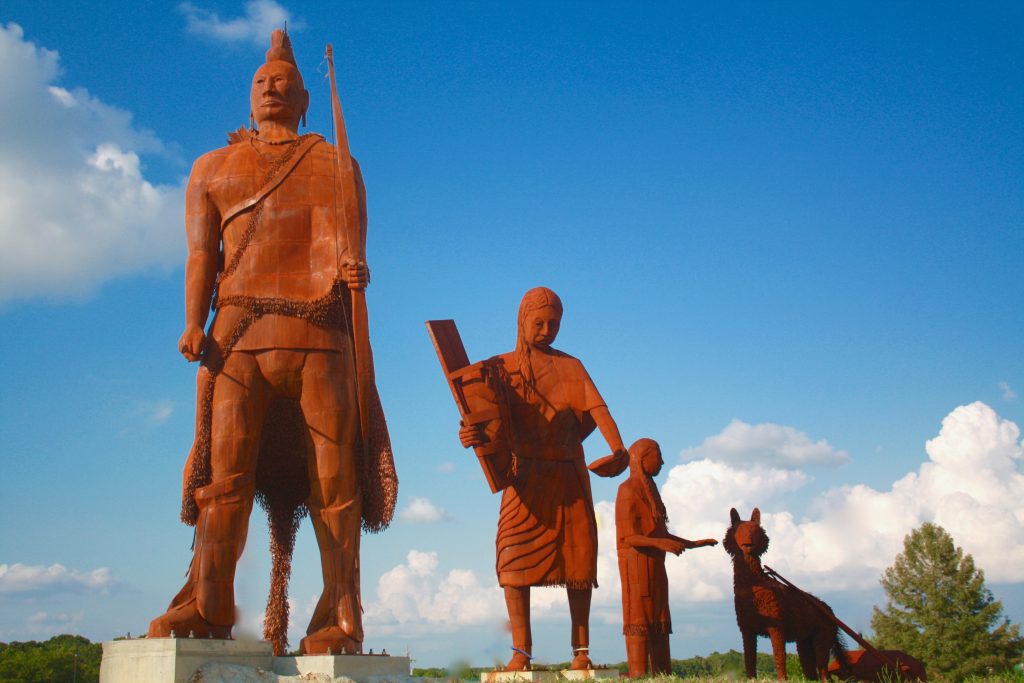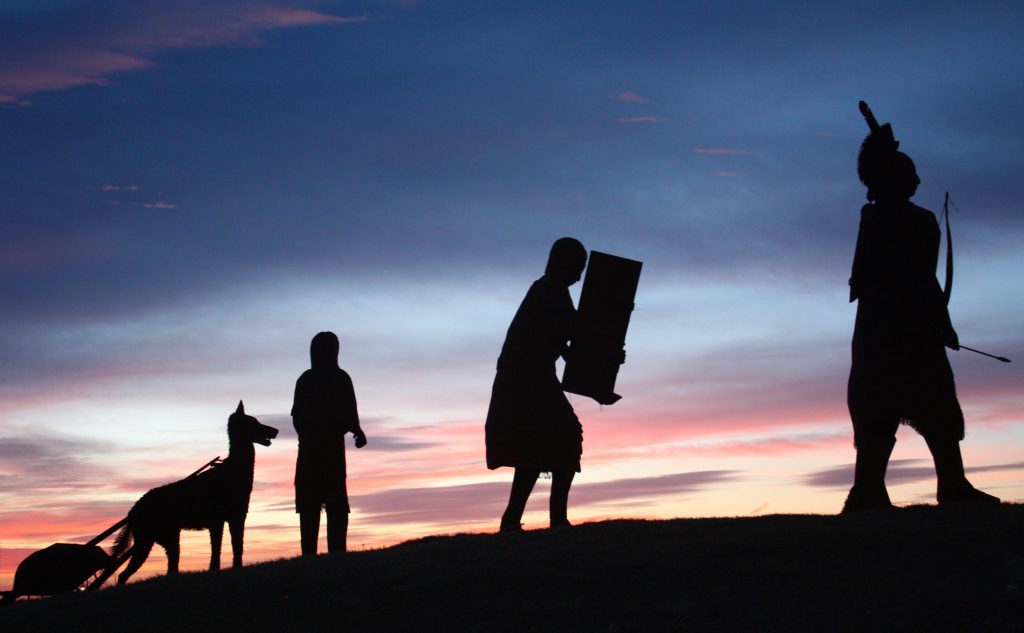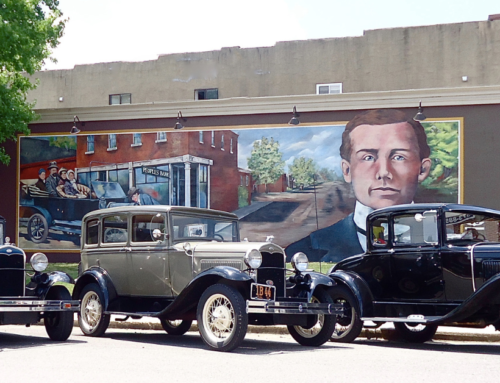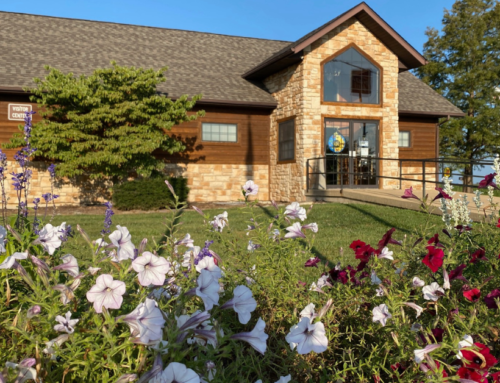
A brave tribe, the Osage inhabited Missouri and traveled the Osage Trail. The monument is located next to the Cuba, MO Visitor Center at Exit 208.
The Osage Legacy Monument occupies what was once the original “Trail of the Osage.” The “Trail of the Osage” once carried furs and lead ore to St. Louis and brought back food, clothing, and supplies from St. Louis to the rural areas of Southwest Missouri.
The monument is a sculpture that stands 35 feet tall, 20 feet wide, and 80 feet in length. It stands proudly at the intersection of Highways 19 and Interstate I-44 in Cuba, Missouri at Exit 208. The sculpture depicts an Osage warrior in period-specific dress. Ornamentation is authentic. The brave moves westward on the trail followed by his family.
During the 1700 – 1800’s, Osage men dressed in deerskin leather, wore leggings with a breechcloth and would add a leather shirt or robe in cold weather. Osage women wore wrap-around skits with another leather cloth wrapped around the upper part of their bodies.
Washington Irving called the Osage, “The finest looking Indians I have ever seen in the West.” George Catlin described the Osage as, “the tallest race of men in North America either red or white skin, many of them six and a half, and others seven feet.”
For food the Osage hunted buffalo, bear and deer. Osage also grew corn, beans, squash and pumpkins. The Osage spoke a language that belongs to the Dhegiha Siouan language group (the Dhegiha Siouan language group included members from the Osage, Omaha, Ponca, Kaw and Quapaw tribes).
The tribe, throughout history, were fierce defenders of their families, their land, and their freedom. Unfortunately, they paid the ultimate price; they lost everything they had dedicated in the land of their ancestors. They lost their home call Missouri.
The Artist: Glen Tutterrow is the premier artist on the Osage Legacy Project. Glen is a local artist in Cuba, Missouri and made the massive all steel sculpture with the assistance of his son Curtis Tutterrow. Glen envisioned the monument as a symbol of the importance of the “Trail of the Osage” and how it continues as a pathway for progress. Glen said,” This corridor that runs right through Cuba provided for Osage travel and trade. The Osage Trail is one of the most important trails to the south that goes across our state. It has always fascinated me because of its historical significance. We are here because of the trail that the Osage blazed for us way back when.”
For more about the monument visit http://osagetraillegacy.com








Leave A Comment